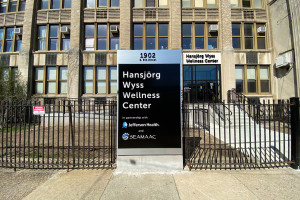Retail Real Estate Forecast: Chestnut Street’s the Place to Be

Large-floorplate buildings like the one PH Retail Partners bought earlier this month represent opportunity for both retailers and savvy investors, says a local real estate market analyst. | Rendering courtesy PH Retail Partners
The signs have been visible for some time for anyone who cares to look. From new projects such as the Oppenheimer to changes in the merchant mix, Philadelphia’s onetime premier shopping street is staging a comeback. PH Retail’s recent purchase and planned repurposing of a two-story building in Chestnut’s 1500 block is yet another sign of that turnaround.
And that turnaround is part of an even larger one, according to James Galbally, managing director of the capital markets group in JLL’s Philadelphia office. “High street retail” — the term comes from what the British call their main city shopping streets — is the hot ticket right now.
“All of the big institutional investors have an interest in high street retail — the big pension funds and the life insurance companies,” he said. “A lot of high-net-worth individuals from New York, California and Florida as well as private equity firms and fund operators have all made offers and continue to pursue that asset class along with the real estate investment trusts.”
A notable exception to this trend is PREIT, which owned the two high-profile high-street properties PH Retail bought last month. That, Galbally said, is because PREIT really isn’t invested in street retail: “They’re a mall developer.” Thus that firm is getting rid of its non-mall properties in order to focus on its core assets.
Which is all right by those other investors, for they’re chasing the opportunities created by increased demand for street retail, especially in buildings with more floor space. Which, in Center City, means Chestnut.
“Chestnut’s unique in that a lot of the buildings have larger floorplates and can accommodate larger retail,” Galbally said. “There’s significant demand to locate on Chestnut Street from larger retailers.”
Some of those retailers have been in place for a while now: Uniqlo, Nordstrom Rack, H&M. Others, like Old Navy and Target, are in the process of joining these now. PH Retail isn’t alone in banking on the likelihood that others will join them, either.
And even though it has almost no large-footprint spaces beyond the recently completed project at the southeast corner of 15th Street, Walnut Street’s fortunes continue to rise as well. “Corner properties on Walnut have seen rents exceeding $200 per square foot, and we’re seeing developers redevelop the corners,” Galbally said. In fact, PREIT had already leased corner space in the building it sold to PH Retail at 15th and Walnut but had not yet acted on space in the building it also owned next door.
What’s driving this Center City street retail boomlet is the continued growth of its residential population. “We’re one of the most dense [residential] downtowns in the whole country,” he said. “Increased population equals increased sales, which increases how much rent a retailer can pay. As we continue to densify and increase our population in Center City, rents will continue to rise as sales increase.”
And interest in properties on Chestnut and Walnut, but especially Chestnut, will increase along with them.
Follow Sandy Smith on Twitter.


